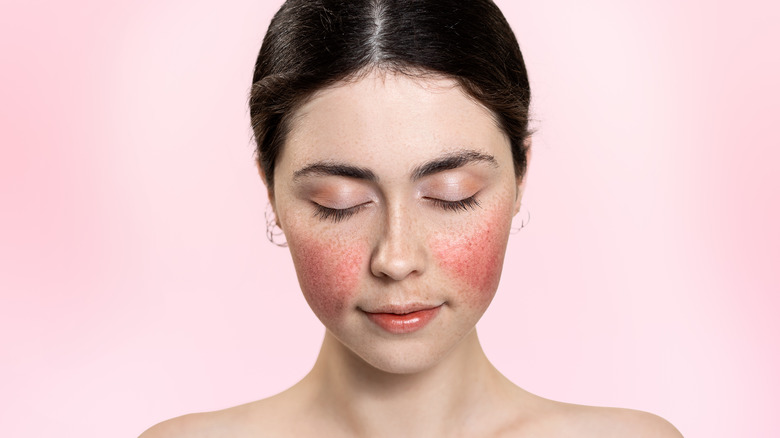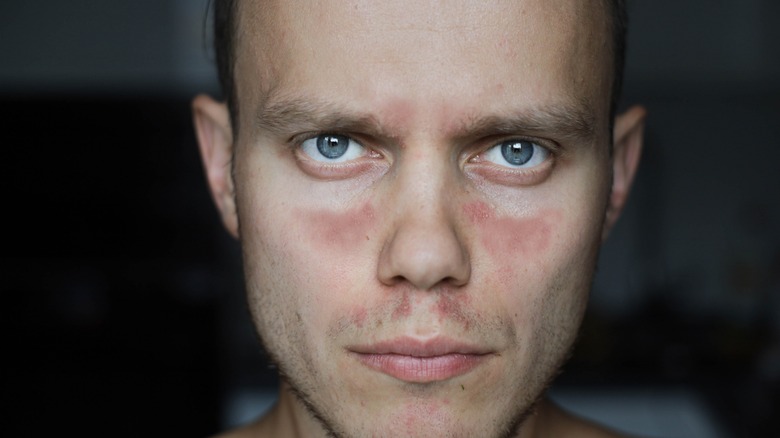Does A Butterfly Rash Always Mean You Have Lupus?
If you've ever noticed that someone has a rash on their face that spans their cheeks and nose, it may have been a malar rash, or what's often referred to as a "butterfly rash" (via Healthline). A butterfly rash is named for the shape it makes on the face, which resembles the wings of a butterfly and covers the bridge of the nose and the cheeks, but not the rest of the face, according to Medical News Today. The blotchy rash is usually red or purple and can be raised or flat. It can be itchy or painful, sometimes looking textured and scaly. However, it typically won't create blisters. A butterfly rash can last for weeks at a time and can be intermittent.
A butterfly rash is a symptom of lupus, but it doesn't always mean you have the autoimmune condition, according to the Lupus Foundation of America. While about 50% of people with lupus will experience a butterfly rash, symptoms of lupus can actually vary widely depending on the person since the disease affects so many organs of the body. Lupus is even called "the great imitator" by some because its symptoms can mimic those of other conditions.
A butterfly rash could mean something else
While this type of skin condition is often associated with lupus, it doesn't always mean this is to blame; and it actually could be a symptom of a number of other health conditions. Because it can be attributed to so many different things, making a diagnosis usually includes a physical examination, a thorough health history, talking through all symptoms, and sometimes testing, such as genetic testing or a tissue biopsy.
There can be many other potential causes of a butterfly rash, according to Healthline. A very common cause is rosacea, which is skin redness that can include pimples, broken veins, and raised patches of skin. Rosacea impacts 16 million Americans, and it can be triggered by stress, alcohol, or spicy food.
Seborrheic dermatitis can be another cause of a butterfly rash; and, while it typically occurs on the scalp, it can appear on the face as well.
Some other health conditions that could cause a butterfly rash include sunburn, bacterial infections, Lyme disease, diabetes, fibromyalgia, and certain chromosomal and genetic disorders. Getting the right diagnosis is important for getting the right treatment.


